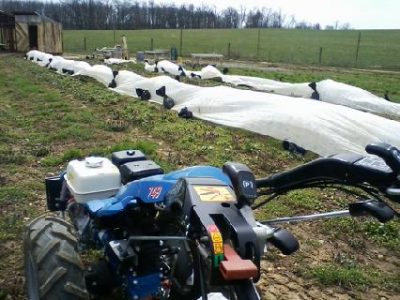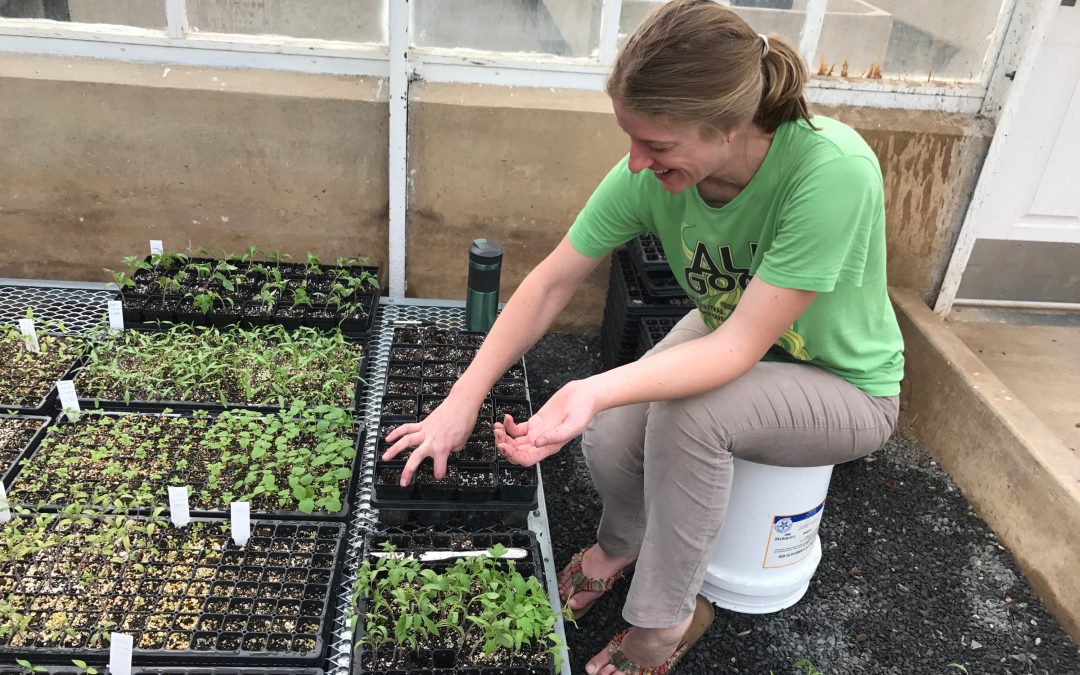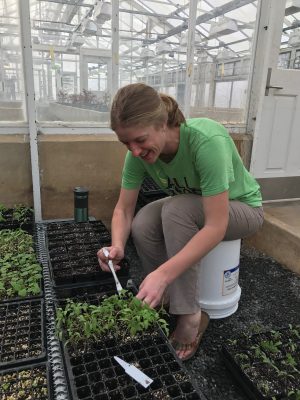By: Tiffanie Strickland, junior, engineering and polymer science.
I’ve always been an avid backyard gardener as long as I can remember, even as a kid. My mom always let me have a garden, although a five year old’s concept of gardening is quite different from reality. When I was little, gardening entailed playing in dirt looking for worms while my mom dug up the garden with a shovel. I checked the garden every day to see how much the plants grew but never remember watering or weeding. The plants just seemed to appear and present us with food like magic. I guess in hindsight, I enjoyed watching my mom garden and I suppose I thought I was helping. As I got older, I learned about the amount of work that actually went into making something grow and realized it wasn’t as easy as I thought. With time, however, I was able to truly appreciate this delicate dance with nature.
The opportunity to step up my gardening game presented itself in an email from one of my professors. It stated that the student farm was searching for interns to help out with their second year of growing and it seemed like the perfect opportunity to build on my knowledge. Although I’m an engineering student minoring in Polymer Science, all sustainable practices intrigue me from material science research and sustainable energy, to sustainable food production.
Having had a backyard garden for most of my adult life, I considered myself a gardening pro, little did I know just how different backyard gardening and small scale sustainable farming were. I envisioned more planning, bigger plots of land, and more manual labor, but how different could they really be? It turns out that there is so much more that goes into building and maintaining a successful one acre plot then I realized. Every step from soil health to delivering fresh vegetables is carefully thought out. Timing and organization are vital when someone other than yourself is expecting a bountiful, fresh harvest.
Our learning and planning started when there was still snow on the ground. Although we produce food for several campus eateries and roughly 20 CSA members per season (spring, summer, and fall), education is the primary goal of the student farm. Over a month’s’ worth of assigned readings and Monday meetings at 7:00am were tackled; arming us with the book knowledge required to set us loose in the field. Seeding dates, including crop successions, had to be calculated and planned for the entire season. It’s crucial to know which species can be planted early and which need to be directly seeded onto the farm. The number of plants were strategically throughout to ensure that all of our customers would receive just enough food without producing too much and being wasteful. Beds were then carefully planned out by plant family with cover crops and succession crops in mind.

Tiffanie, and Student Farm interns use a tiller to turn over soil in order to prepare the ground for planting. Photo: Tiffanie Strickland.
That’s just a little of the planning and doesn’t include any of the actual physical work. It doesn’t include the preparation and forming of farm beds, seedling care and transplanting, weeding, row covers, learning to operate temperamental farm equipment and even building shelves and Home Depot runs in our trusty farm truck Walter. Add in a mix of other like minded students from across the curriculum and you have the perfect recipe for success. I’ve only been an intern with the student farm for a few months, but already I’ve learned so much and can’t wait to see what the rest of the season has in store for us!


